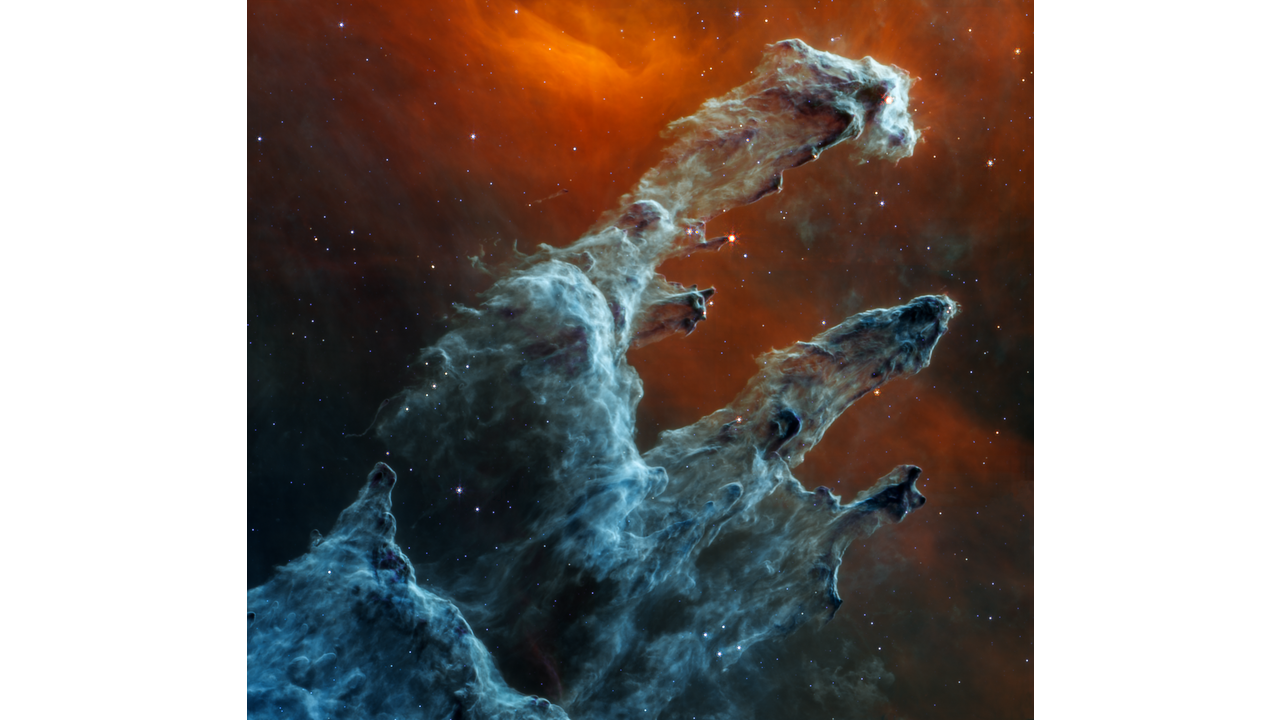#2 V
The Petrova line may not be real (thankfully), but real astronomical instruments are capable of detecting infrared light at 25.984 microns.
For example, the Mid-Infrared Instrument (MIRI) aboard the James Webb Space Telescope contains a camera and a spectrograph that capture light in the 5 to 28 micron range.
The Eagle Nebula’s famous “Pillars of Creation” as imaged by MIRI:

There is a very faint, but detectable line in the solar system that emits infrared light at the 25.984 micron wavelength.
01.117